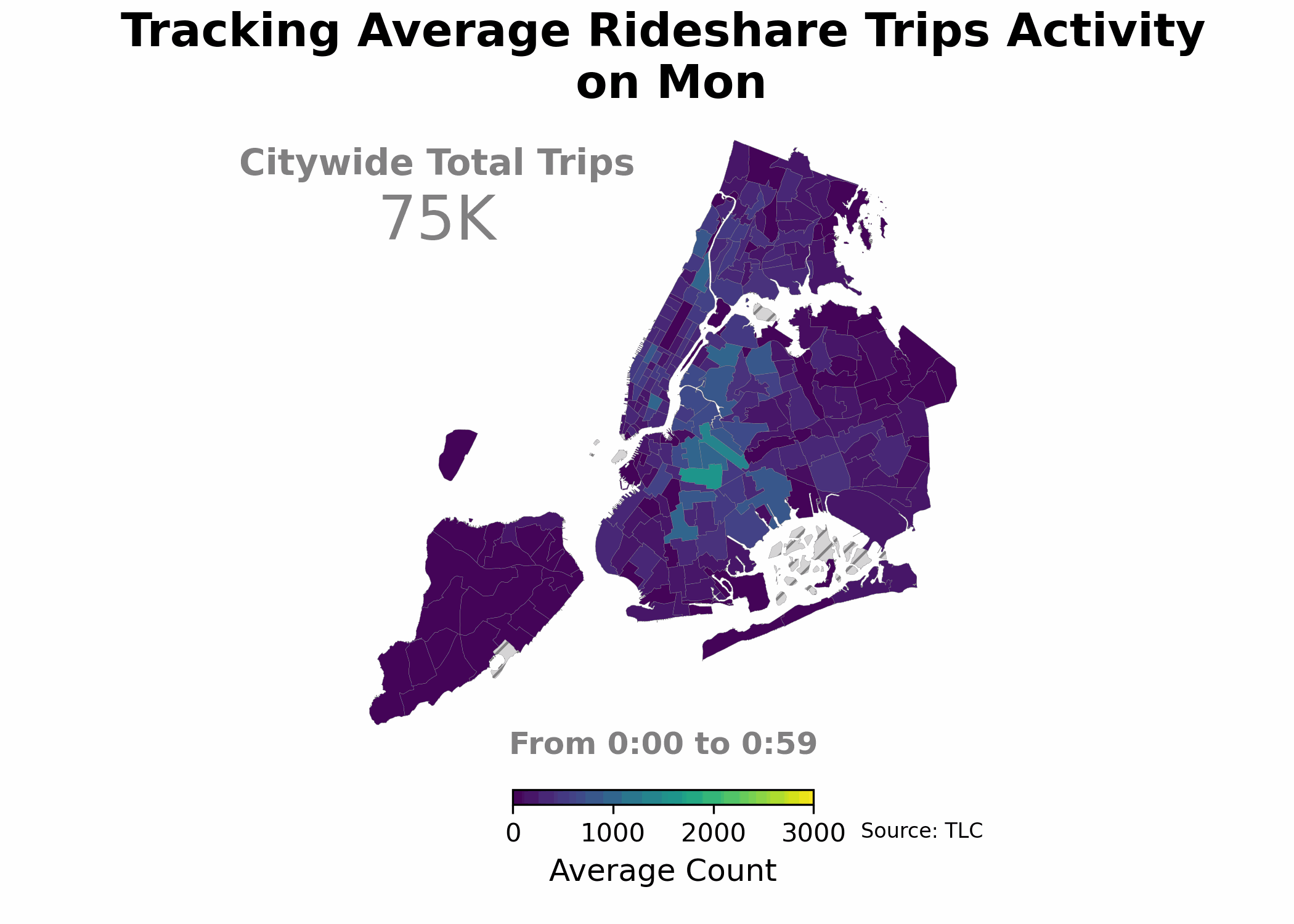For-Hire Vehicles Electrification in the City
For-Hire Vehicles provide a service with pre-arranged transportation throughout NYC. Within the vast transportation system in the city, for-hire services have been a key component, with an increasing number of registrations yearly. For individuals without a car, such services provide a high level of mobility where public transportation cannot reach. To better regulate the service, there are four classes categorized by the Taxi & Limousine Commission (TLC): Livery Base, Black Car Base, Luxury Limousine Base, and High Volume For-Hire Service (HVFHS) Base. Among those categories, the HVFHS includes bases that dispatch more than 10,000 trips per day, which tend to be app-based transportation companies such as Uber and Lyft.
Why Electrification
There are approximately 96,000 for-hire vehicles, completing 250 million trips annually. Such a large volume of trips can produce at least 600,000 metric tons of carbon dioxide, accounting for 4% of the transportation emission sector. Due to the considerable mileage, electrifying FHVs has a greater impact than electrifying personal ICE vehicles in terms of emission reduction. Researchers show that one rideshare EV can have a comparable impact to that of three personal EVs. Thus, the electrification transition of FHVs, especially HVFHS, can better help the city move toward the ZEV goal and substantially reduce GHG emissions.
TLC's Roadmap: EV Expansion Barriers
In the Charged Up! Report, the TLC highlights the challenges facing the expansion of for-hire EVs from three dimensions.
1. Cost: The higher upfront cost of EVs and EVSE, along with a limited used vehicle market, makes it difficult for some TLC licensees to start the transition, even though maintenance expenses and fuel costs are much lower compared to ICE vehicles within a few years.
2. Charger Coverage: There is a gap between the existing charging infrastructure and drivers' charging needs. DCFCs are not efficiently distributed in frequent drop-off areas, while the Level 2 network does not align well with the concentration of driver residency neighborhoods.
3. EV-centric Regulations: The report suggests that the TLC can implement regulation to issue new EV licenses (only WAVs and EVs are eligible for new FHV license currently) and work with other public stakeholders to set electrification targets (Green Rides Initiative).
Rideshare Fleet Benchmarks: Green Rides Initiative
The Green Ride Initiative aims to smoothly transition rideshare fleets, namely HVHFS, to either electric vehicles or wheelchair accessible vehicles (WAVs) by 2030. It sets benchmark yearly by evaluating the percentage of trips dispatched to either ZEVs or WAVs.
As of April 2024, Year-to-Date statistics showcase that 17.20% of trips in Lyft and 17.75% in Uber are completed by EVs and WAVs, which is a promising start towards reaching the annual goal.
Check out TLC Full Dashboard: TLC FactBook
Charging Infrastructure Needs Assessment
Squeezing
EV Availability
Squeezing
EV Charging Availability
Evaluate if public charging stations align with rideshare trip activity

Reference
- NYC TLC: For-Hire Vehicle Bases
- NYC TLC Electrification Report 2022: Charged Up!
- PlaNYC: Getting Substainability Done
- Jenn A. (UC Davis): Emissions Benefits of Electric Vehicles in Uber and Lyft Services
- TLC: Green Rides Initiative
- Lyft: Lyft Economic Impact Report
- Uber: Environmental, Social, and Governance Report